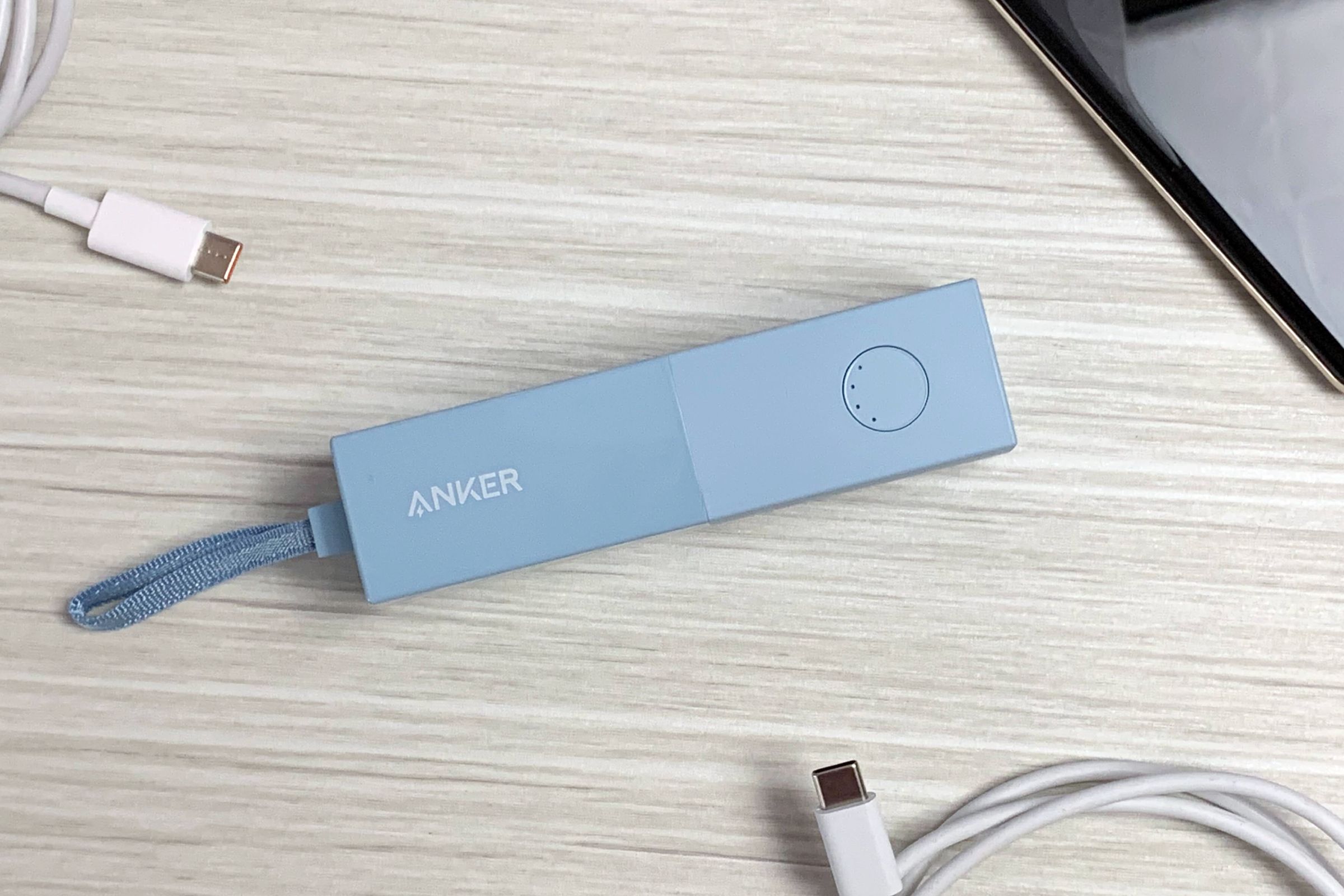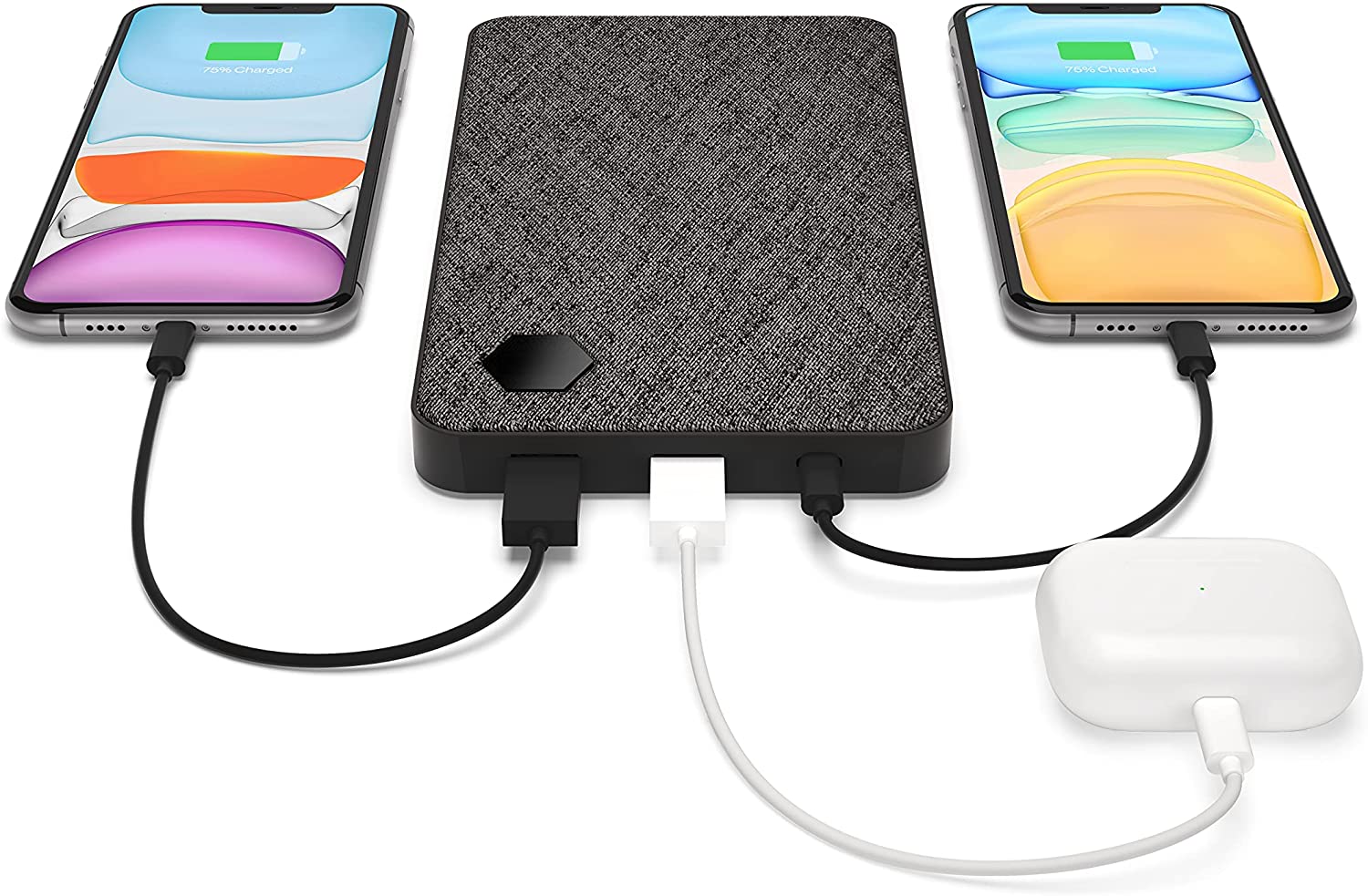
Image: Rob Schultz / IDG
Traveling often involves taking along multiple devices—smartphone, tablet, laptop, and the like. But you won’t always have access to a wall outlet to charge all, or even any, of them. That’s why it’s important to add a power bank to your pack. But with so many options available, how do you know which power bank best suits your needs? Everything from various charging specs, to different ports, to the included cables need to be considered before making a purchase.
That’s where we come in. We’ve tested a ton of power banks from different manufacturers spanning the range of available price points and specs. We’ve curated a list of our favorites to help you find the best value. You can rest assured that our recommendations are all great picks as the PCWorld staff puts each power bank through a battery—pun intended—of tests. You can learn more about our evaluation process below our picks.
While our recommendations reflect a range of needs, if you need something more substantial to power your appliances while off-grid or during an emergency, check out our roundup of best power stations.
Anker 511 PowerCore Fusion 5K – Best budget USB-C power bank

Pros
Efficient
Slim, compact size
Both a battery and a wall charger
Cons
Charging a device at the wall takes up the whole outlet
The Anker 511 FusionCore 5K is a great travel companion, particularly when out and about in a city. Its hybrid design makes it ideal if you don’t like to carry much but always want an adequate charge for your phone—though it does take up an entire wall outlet when used as a charger.
Read our full
Anker 511 PowerCore Fusion 5K review
PowerCore Fusion 5000 2-in-1 Portable Charger and Wall Charger – Best budget USB-A power bank

Pros
Built-in wall adapter
Two USB ports
Cons
Not the most efficient battery pack we’ve tested
This older Anker model may not be as svelte as the newer 511 variation, but the PowerCore Fusion 5000 is still an extremely convenient combo wall charger and portable power bank—especially if you have devices that still use USB Type-A cables. The bank itself can be recharged via either method—power outlet or MicroUSB port. It’s limited to two USB-A ports for device charging, but that doesn’t diminish its great handiness-to-cost ratio.
Read our full
Powercore Fusion 5000 2-in-1 Portable Charger and Wall Charger review
Einova Laptop Power Bank – Most stylish power bank

Pros
The display is actually useful
Fabric covering is a nice touch
Above-average efficiency
Cons
Both USB ports should have the same charging speeds
With its stylish fabric-clad body, its discreet yet useful battery-status display, and its three USB ports (one of which is USB-C), Einova’s power bank adds flair and above-average battery efficiency to your everyday carry.
Read our full
Einova 64W Ultra-Fast Power Bank review
RAVPower Portable Power Station 252.7Wh Power House – Best small power station

Pros
Small form factor
Plenty of ports
Comes with a case and built-in flashlight
Cons
Built for quick trips, not for extended use
There are times when a mere power bank isn’t enough—the circumstances call for a power station. Say you’re spending the weekend off the grid. Or you want to be prepared for a future emergency. The RAVPower Portable Power Station 252.7Wh Power House will get the job done. With a capacity near 252.7Wh, a nice complement of ports, a built-in flashlight, and an included carrying case, this highly portable power station makes a great travel companion for road trips. (For more options, see our roundup of the best portable power stations.)
Read our full
RAVPower Portable Power Station 252.7Wh Power House review
How we test
Determining whether a power bank lives up to a company’s promise entails more than simply connecting it to a phone and charging. Testing battery packs is done over weeks, not days, and requires extra equipment in order to ensure the batteries work as expected.
1. Upon receiving each battery pack, it’s fully charged, using indicator lights as a means to track charge level.
2. Then to track efficiency, we use an AVHzY USB Power Meter in tandem with a DROK Micro Load Tester.
As we use the DROK load tester to drain the pack of power, we are able to test against a battery’s stated maximum current, and verify that proper shutdown mechanisms are in place should something go wrong during a charging session (such as a device drawing over the maximum amps).
By using the AVHzY USB Power Meter, we are able to monitor volts and amps, total power throughput, and total amount of time to deplete a battery from full to empty. The meter can create an Excel spreadsheet of the entire process for future reference.
3. Next, we recharged the battery, this time using the AVHzY to track it and chart the amount of time it takes to reach full charge.
The AVHzY meter solves a shortcoming we had with our previous method with the PortaPow. Previously we had to use a GoPro camera to track each battery through its charge cycle, as the PortaPow monitor would continue to collect data after the battery was fully charged (trickle charging is normal, and unfortunately interferes with our testing).
If a battery was capable of charging through USB-C, we use that instead of Micro-USB.
4. The AVHzY also has a feature built in that checks a charging port for all of its supported charging standards. We are able to run that test and get an instant readout to confirm support for QC 3.0, for example, without needing to have compatible phones or devices on hand.
Power source and cables
All of our tests were conducted using the same wall adapter and, when possible, USB-C or Micro-USB cable. This was done to eliminate any discrepancies with wall adapters and cable throughput.
What to look for in a portable power bank
Without fancy testing equipment, you never truly know if you’re getting what you paid for with a battery pack. Vendors, especially in Amazon listings, like to throw around a lot of terms and certifications.
Here are a few tips to help you make a decision:
For those with a compatible device, make sure the battery pack is Quick Charge 2.0, 3.0, or PD certified. Depending on your smartphone, this can make a big difference in performance. If you own a QC 2.0 device, however, ask yourself if paying extra for a QC 3.0 capable pack is worth it.
Don’t put 100 percent confidence in a company’s claims of a pack being able to charge, say, a Galaxy S8 or iPhone X six times over. Battery capacity and efficiency varies based on a number of factors. Read this Macworld report on USB-C packs to learn more about batteries and capacity.
Look at the specs of the battery, and ensure that its input isn’t limited to slow charging such as 5V/1A. The faster the input, the faster your battery pack rechargers, the faster you’re ready to hit the road.
FAQ
1.
What devices can a power bank charge?
Power banks are most commonly intended to charge mobile devices such as cellphones, tablets, cameras, and portable speakers. They can also be used to charge laptops provided the ports allow for it and the power charging rate is compatible.
Power banks are generally not suited to charging larger electronic devices in your home. If you’re looking for a backup power source during an emergency or while camping, you should instead opt for a power station.
2.
What is mAh capacity?
The mAh (milliampere per hour) capacity rating refers to the available storage capacity for a battery. A higher number means that the battery can store more energy and has a longer battery life when charging a device. So for example, an iPhone 13 Pro Max’s battery is rated at 4,352 mAh. This means that a power bank with 10,000 mAh can fully recharge that phone a little over twice before running out of power.
3.
What battery capacity should you look for?
For a portable power bank that you can easily travel with, you should look for a minimum of 10,000 mAh. Most models nowadays even offer 20,000 mAh for reasonable prices. The more mAh, the better, just be sure to weigh your capacity needs against the physical size of the power bank.
Generally, the more mAh a power bank has, the larger its physical size and the heavier it is as well. Therefore, it is recommended when looking at a power bank, that you first consider the amount of power you need to charge your devices and then adjust your expectations based on the size and weight you are willing to carry around with you.
4.
How fast can a power bank charge my devices?
How fast your power bank can charge a device is dependent upon the available output of the power bank and the available input of the device. Without getting too much into the electrical details, a standard 3,000mAh device such as a smartphone can be expected to charge in about 90 minutes by most power banks. However, many power banks nowadays come with quick charge technology, which helps speed up the process even more. Larger devices such as tablets and laptops may take much longer to charge as they require much higher inputs than smartphones.
Always double-check that the power bank you want has an output that matches or exceeds the input of your device to ensure the fastest possible charging.
5.
What is the lifespan of a power bank?
Power bank lifespan is determined by a few factors such as how often you charge the power bank, the quality of the power bank itself, and the conditions in which the power bank is kept. That being said, you should expect a high-quality power bank that is charged every few days and kept in a cool dry place to last several years or more.
>>> Read full article>>>
Copyright for syndicated content belongs to the linked Source : PCWorld – https://www.pcworld.com/article/407599/best-power-banks.html































